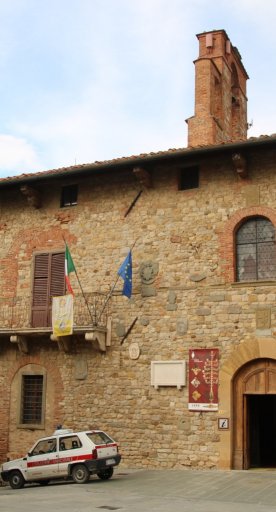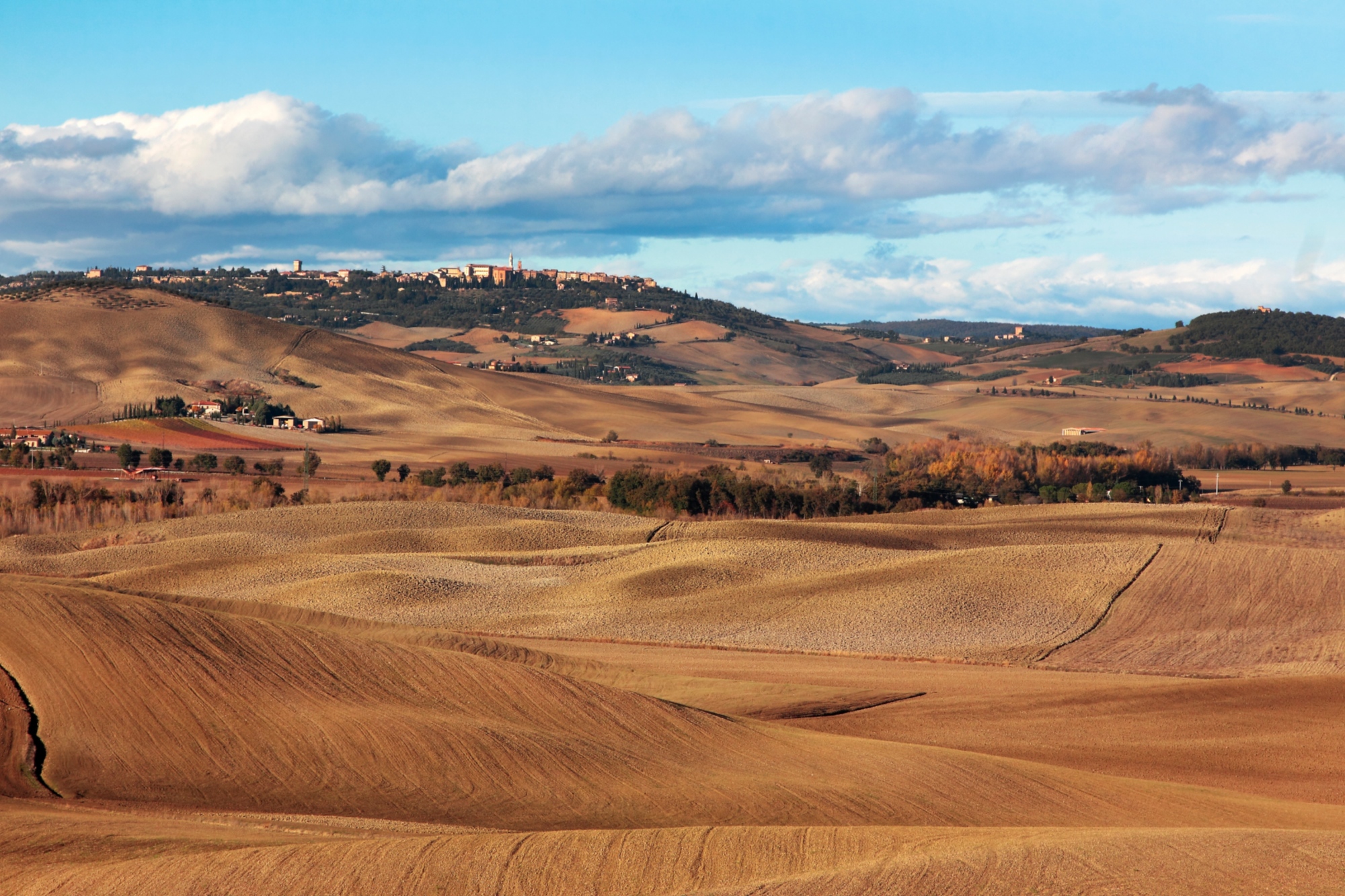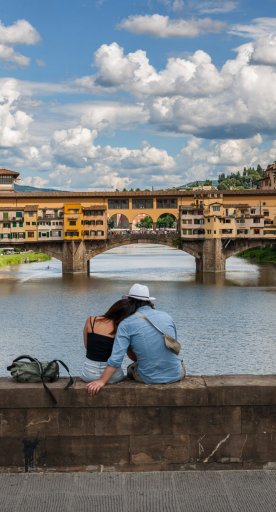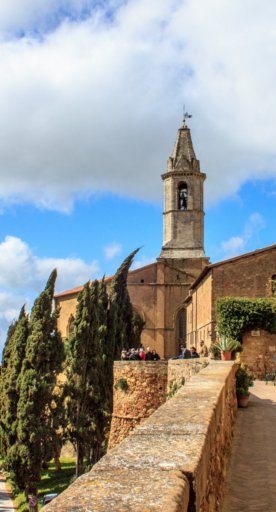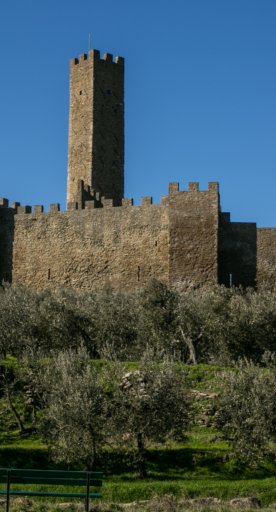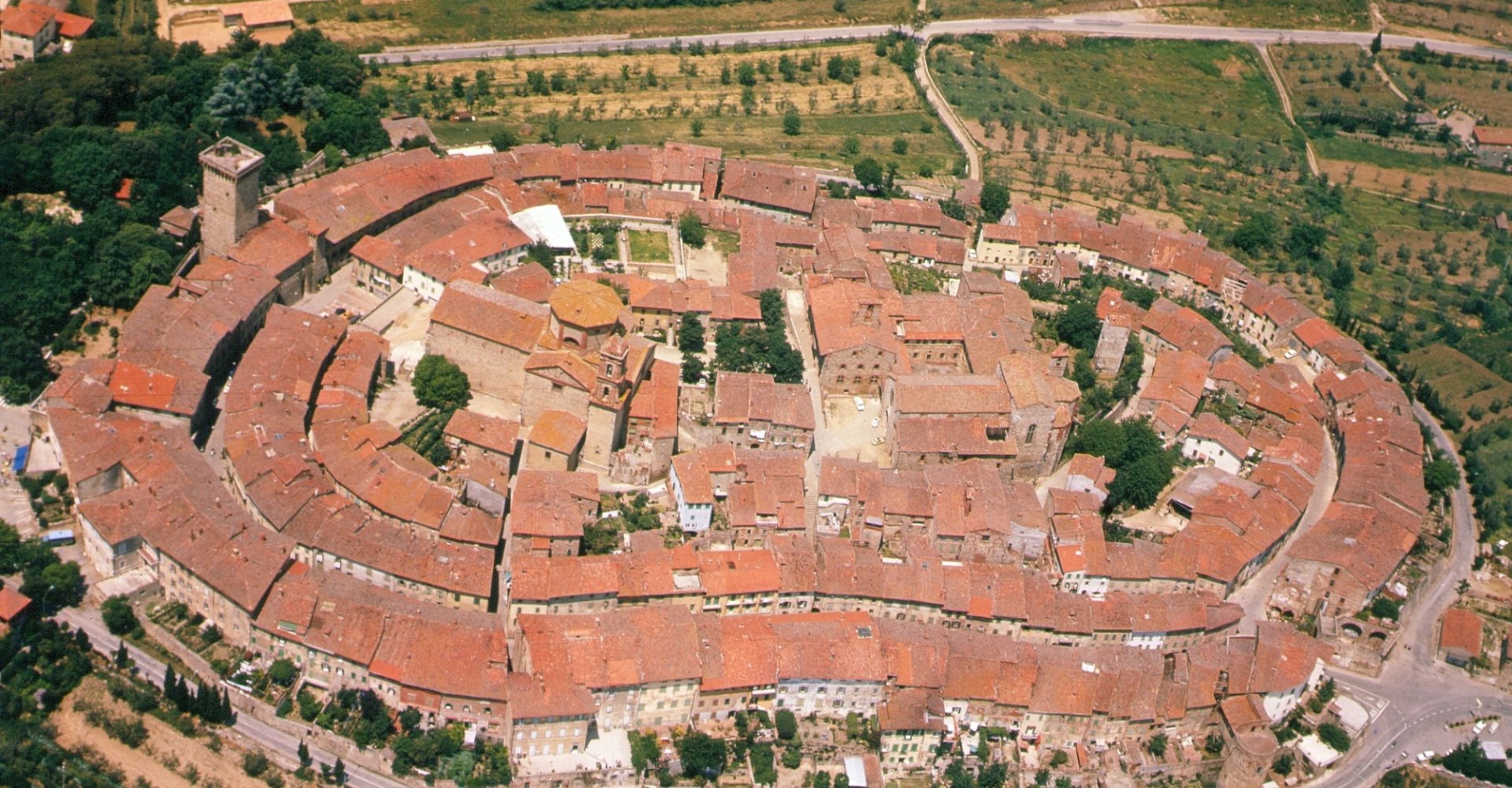
Lucignano
A romantic village in the Aretine Valdichiana
Lucignano is a walled medieval town in the Valdichiana area of the Tuscan countryside. It has earned the Touring Club's coveted Orange Flag.
With its elliptical structure, fanning outward in concentric rings, the town represents one of the most interesting examples of medieval urban planning. Its happy geographic situation - on top of a hill, bordering the old dominions of Florence, Arezzo, Siena and Perugia - has guaranteed its strategic importance ever since antiquity.
Originating in the Etruscan era, Lucignano became strategically vital during the medieval period when Florence and Siena were constantly vying for supremacy, until the Battle of Scannagallo ensured that supremacy was Florence's. Every historical period has left its mark on the village, but the Sienese influence has marked it most profoundly, as far as its current artistic and architectural heritage goes.
What to see in Lucignano
The main square, piazza del Tribunale, contains no fewer than three striking buildings: the church of San Francesco, the Collegiata di San Michele Arcangelo, and the Palazzo Comunale, which has a museum inside it.
The twelfth-century church of San Francesco can be recognised by its façade, which is made of travertine and local sandstone. Inside, it has a polyptych attributed to Luca di Tommè, showing the Madonna holding up Lucignano's castle.
The Collegiata di San Michele Arcangelo is also worth a visit. Inside we find precious canvasses from the seventeenth century, thought to be by Matteo Rosselli, Giacinto Gemignani and Rutilio Manetti. The Town Museum, which stands in the same square, contains altarpieces, triptychs and liturgical objects, the place of honour being occupied by a unique gold reliquary: the Tree of Gold, known also as the Tree of Love or the Tree of Life. A local legend has grown up around the tree, which symbolises divine love: it is said that it brings good luck to lovers who pledge their love to each other before its branches.
The main square, piazza del Tribunale, contains no fewer than three striking buildings: the church of San Francesco, the Collegiata di San Michele Arcangelo, and the Palazzo Comunale, which has a museum inside it.
The twelfth-century church of San Francesco can be recognised by its façade, which is made of travertine and local sandstone. Inside, it has a polyptych attributed to Luca di Tommè, showing the Madonna holding up Lucignano's castle.
The Collegiata di San Michele Arcangelo is also worth a visit. Inside we find precious canvasses from the seventeenth century, thought to be by Matteo Rosselli, Giacinto Gemignani and Rutilio Manetti. The Town Museum, which stands in the same square, contains altarpieces, triptychs and liturgical objects, the place of honour being occupied by a unique gold reliquary: the Tree of Gold, known also as the Tree of Love or the Tree of Life. A local legend has grown up around the tree, which symbolises divine love: it is said that it brings good luck to lovers who pledge their love to each other before its branches.
Nearby
The ruins of a Medici castle lie immediately outside the town walls, as does the sanctuary of the Madonna delle Querce, which is said to have been designed by one of the sixteenth century's most illustrious architects in Giorgio Vasari. The fortified village of Gargonza stands a little further on, among some dense woods: its tower, its main gate, its little piazza and parish church make up the old fourteenth-century town centre.
If you have the chance, you should visit a few of Aretine Valdichiana's other medieval settlements, such as Castiglion Fiorentino, Cortona and Marciano.
The ruins of a Medici castle lie immediately outside the town walls, as does the sanctuary of the Madonna delle Querce, which is said to have been designed by one of the sixteenth century's most illustrious architects in Giorgio Vasari. The fortified village of Gargonza stands a little further on, among some dense woods: its tower, its main gate, its little piazza and parish church make up the old fourteenth-century town centre.
If you have the chance, you should visit a few of Aretine Valdichiana's other medieval settlements, such as Castiglion Fiorentino, Cortona and Marciano.
Events
The Segni d'Amore (signs of love) show takes place every 14 February to mark St Valentine's Day, and sure enough, the reliquary that is the Tree of Love is at the heart of things.
The last two Sundays of May are given over to the Maggiolata, the event that really celebrates the arrival of spring in Lucignano. It consists of allegorical floats rolling along, all designed and put together by Lucignano's four districts, and is accompanied by folk music groups who come from every corner of Italy to take part.
Another folk event, though this one takes place in September, is Memorie del Passato (memories of the past). This is a historic re-enactment of scenes of everyday life from the nineteenth century.
The Segni d'Amore (signs of love) show takes place every 14 February to mark St Valentine's Day, and sure enough, the reliquary that is the Tree of Love is at the heart of things.
The last two Sundays of May are given over to the Maggiolata, the event that really celebrates the arrival of spring in Lucignano. It consists of allegorical floats rolling along, all designed and put together by Lucignano's four districts, and is accompanied by folk music groups who come from every corner of Italy to take part.
Another folk event, though this one takes place in September, is Memorie del Passato (memories of the past). This is a historic re-enactment of scenes of everyday life from the nineteenth century.
Typical Produce
Lucignano's food has its roots in the peasant traditions of the Valdichiana, so it consists largely of dishes from poor cuisine, such as panzanella and bread soup. But we should not forget the veal from the Chianina breed, which is raised in this area for the famous Chianina steak that it provides.
Lucignano's food has its roots in the peasant traditions of the Valdichiana, so it consists largely of dishes from poor cuisine, such as panzanella and bread soup. But we should not forget the veal from the Chianina breed, which is raised in this area for the famous Chianina steak that it provides.
